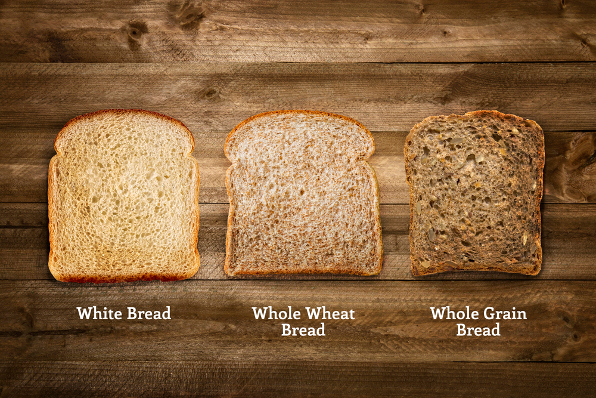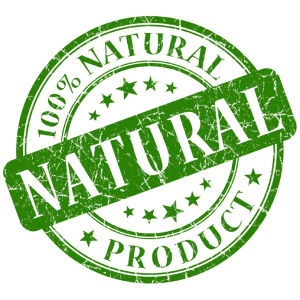There are many terms floating around out there, describing ‘healthy’ foods, organics and other supposedly-better options for your shopping cart and dinner table. But the food manufacturing and packing industries are using some subtle word games to make us think their products are ‘better’ than they really are…
 White Bread vs. Whole Wheat vs. Whole Grain. Whole Wheat has some of the bran left
White Bread vs. Whole Wheat vs. Whole Grain. Whole Wheat has some of the bran left
in the Flour. Whole Grain has all the bran and germ left in, along with the
endosperm which is largely Starch. And the bran and germ are
where much of the nutritional value of Grains resides.
Even I was surprised to discover some of nefarious tricks the marketing people are using to make those who are serious about the healthfulness of our food think they’re eating ‘healthier’ than they are…
‘Natural’ and ‘Natural Source’
You may think that these terms guarantee that what you’re eating is as nature intended it – free of additives and artificial ingredients. Not necessarily so. ‘Natural’ flavouring or colouring can simply mean a food product contains added flavour or colour ingredients which are extracted, refined and otherwise processed from natural ingredients. ‘Natural’ often means, essentially, that an ingredient was not totally engineered in a lab.
‘Pure’
This one is going out of style, but you still see it. My favorite example of ‘Pure’ deception is the jar of Pure Cherry Jam that contains about three cherries and the rest is pectin-thickened diluted Cherry Juice. Okay, I may be exaggerating a bit, here. But I always keep in mind the advice of a culinary school lecturer or mine: “‘Pure’ is meaningless. You can have Pure Arsenic, too, you know. That doesn’t make it any healthier. Quite the opposite, in fact.”
‘Popped’, ‘Puffed’, ‘Baked’ and ‘Low-Fat’
Chips and other crunchy snacks featuring these descriptors on their labels may not be all that much healthier than ‘regular’ versions of the same products. Fist, they’ll still have all the Salt and the same artificial colours and flavours as regular’ snacks. Less apparent is the fact that they’re usually made from refined Flours, Potato Starch or other powdered ingredients.
“You may be better off eating potato chips, made with real potatoes fried in a healthful oil,” Katherine Tallmadge, a Washington, DC–based nutritionist and the author of Diet Simple, told Reader’s Digest.
‘Whole Grain’ vs. ‘Multi-Grain’
This one is very popular right now, as food processors try to take full advantage of the fad for Whole Grains. The difference is critical, though. Whole Grains contain all parts of the Grain kernel: the Bran, the Germ and the Endosperm. And its the bran and Endosperm that add nutritional value to Whole Grains compared to regular grains, like processed Rice or Wheat. The rest of the Grain Kernel is just Starch, and that’s what we get in most of he Flour we consume – unless it, too, is a ‘Whole Grain’ grind. ‘Multi-Grain’ bread simply contains a mixture of different Flours, not necessarily any of the Bran or Endosperm which contribute so much to the healthfulness of ‘Whole Grain’ products. And those processed flours are a lot easier for food processors to work with as well as cheaper. The Canadian Healthy Grains Institute has a great FAQ page on this issue.
‘Organic’
Some folks still believe that ‘Organic’ foods are more nutritious than their non-organic counterparts. Nutritionists and dieticians say that’s just not true. In fact, some non-organic may be higher in beneficial nutrients than their organic equivalents depending on how they were grown and what kind of ‘natural’ fertilizers they were given. ‘Organic’ simply means that a food product was grown without the use of chemical fertilizers or pesticides. And, yes, ‘Organic’ Lettuce can acquire E. coli and other bio-contaminations just as easily as non-organic greens.
And that’s just the beginning…
There are many other terms and phrases in common use in the food processing and packaging industry today that are designed to deceive. Maybe, if there’s enough reader interest, I’ll come up with another installment. I could probably write half a dozen or more posts on this topic. But I don’t want to depress you too much…
~ Maggie J.

